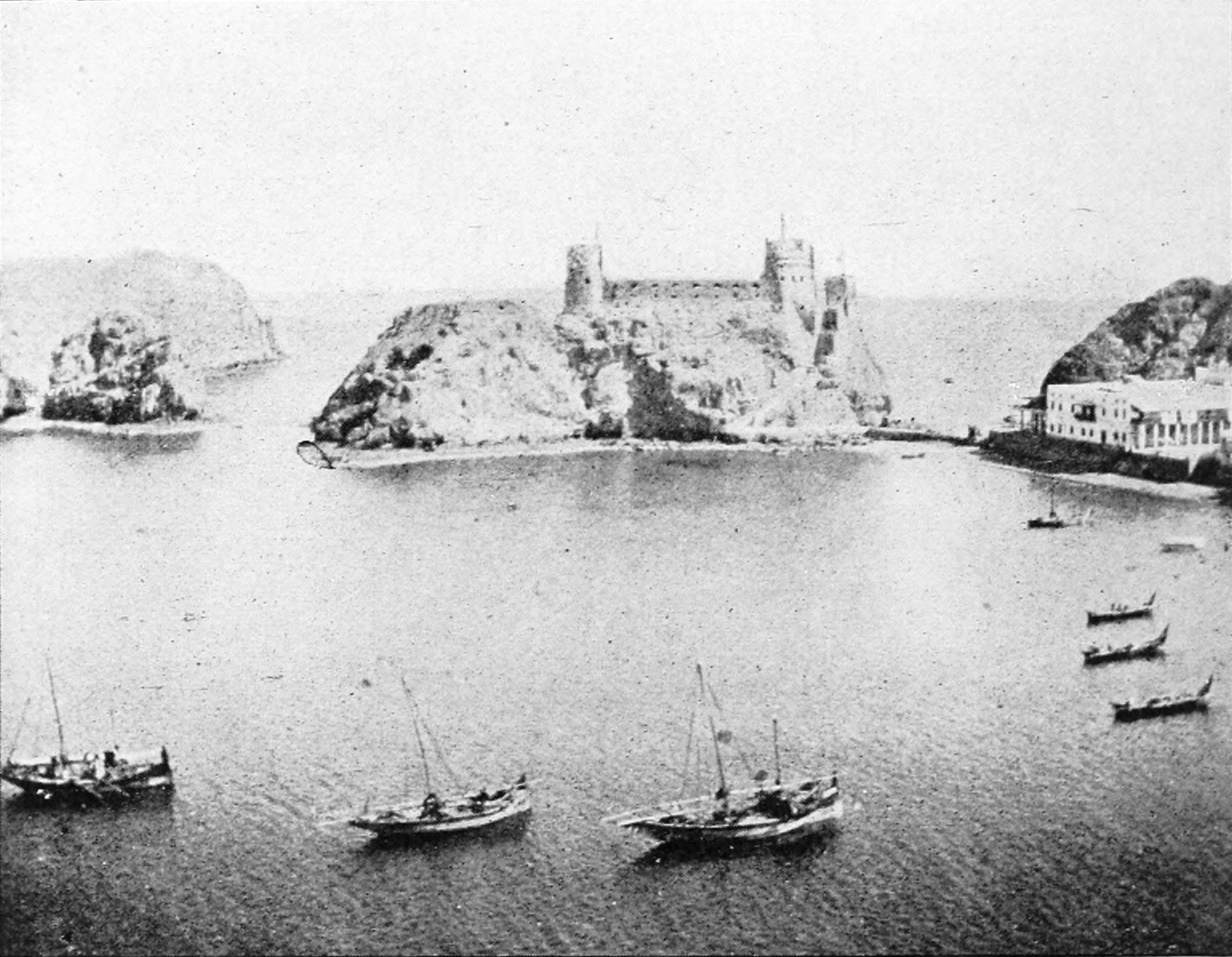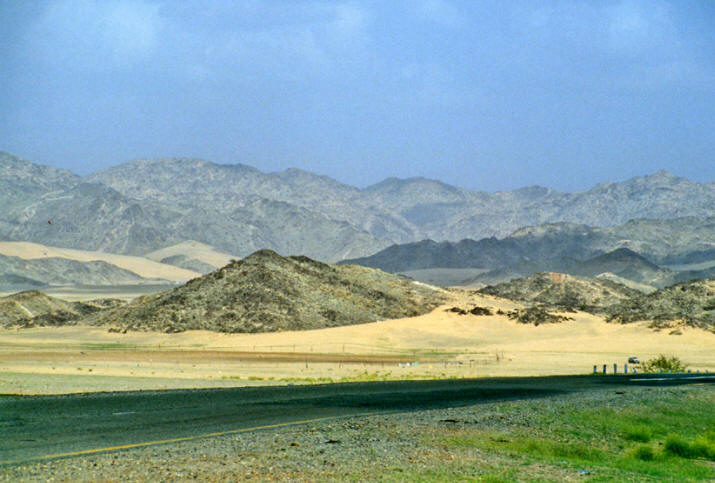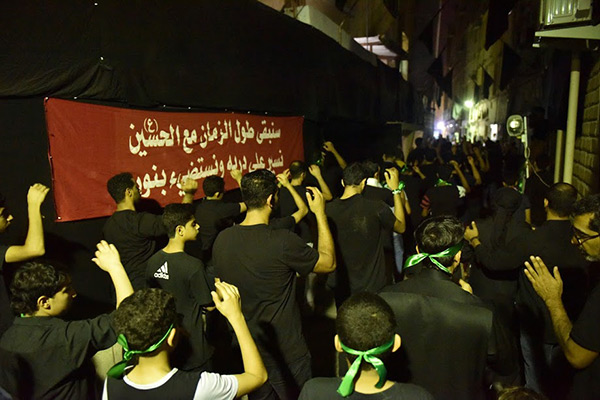|
Abdulaziz Bin Muhammad Al Saud
Abdulaziz bin Muhammad Al Saud ( ''ʿAbd al ʿAzīz bin Muḥammad Āl Suʿūd''; 1720–1803) was the second ruler of the Emirate of Diriyah. He was the eldest son of Muhammad bin Saud and the son-in-law of Muhammad bin Abdul Wahhab. Abdulaziz ruled the Emirate from 1765 until 1803. He was nicknamed by his people as the savior of his time (''mahdi zamanihi'' in Arabic) due to his fearless activities. Early life Abdulaziz was born in 1720 and was the eldest son of Muhammad bin Saud. He was educated by Muhammad bin Abdul Wahhab and became a Wahhabi scholar. Long before the death of his father Abdulaziz was announced the next ruler of the state at the request of Muhammad bin Abdul Wahhab. From 1750 Abdulaziz was the chief military commander of the Emirate due to his father's old age. In 1763 he led a military campaign of the Emirate attacking the regions under the rule of the Bani Khalid Emirate. It was the first military attack of the Emirate outside the Nejd. These attacks wer ... [...More Info...] [...Related Items...] OR: [Wikipedia] [Google] [Baidu] |
Al Saud
The House of Saud ( ) is the ruling royal family of Saudi Arabia. It is composed of the descendants of Muhammad bin Saud, founder of the Emirate of Diriyah, known as the First Saudi State, (1727–1818), and his brothers, though the ruling faction of the family is primarily led by the descendants of Ibn Saud, the modern founder of Saudi Arabia. It forms a subtribe of the larger prominent ancient Banu Hanifa tribe of Arabia, from which well known 7th century Arabian theologist Musaylima, Maslama ibn Ḥabīb originates. The most influential position of the royal family is the King of Saudi Arabia, an Absolute monarchy, absolute monarch. The family in total is estimated to comprise 15,000 members; however, the majority of power, influence and wealth is possessed by a group of about 2,000 of them. Some estimates of the royal family's wealth measure their net worth at $1.4 trillion. This figure includes the market capitalization of Saudi Aramco, the state oil and gas company, and it ... [...More Info...] [...Related Items...] OR: [Wikipedia] [Google] [Baidu] |
Najd
Najd is a Historical region, historical region of the Arabian Peninsula that includes most of the central region of Saudi Arabia. It is roughly bounded by the Hejaz region to the west, the Nafud desert in Al-Jawf Province, al-Jawf to the north, ad-Dahna Desert in Al-Ahsa Governorate, al-Ahsa to the east, and Rub' al Khali, Rub' al-Khali to the south, although its exact boundaries cannot be determined due to varying geographical and political limits throughout history. Administratively, Najd is divided into three main Provinces of Saudi Arabia, regions: the Riyadh Province, Riyadh region which features Wadi Hanifa and the Tuwaiq escarpment, which houses easterly Al-Yamama, Yamama with the Saudi capital, Riyadh since Emirate of Nejd, 1824, and the Sudairi region, which has its capital in Al Majma'ah, Majmaah. The second region, Al-Qassim Province, Al-Qassim, houses the fertile oases and date palm orchards spread out in the region's highlands along Wadi al-Rummah, Wadi Rummah in c ... [...More Info...] [...Related Items...] OR: [Wikipedia] [Google] [Baidu] |
Muscat
Muscat (, ) is the capital and most populous city in Oman. It is the seat of the Governorate of Muscat. According to the National Centre for Statistics and Information (NCSI), the population of the Muscat Governorate in 2022 was 1.72 million. The metropolitan area includes six provinces, called , and spans approximately . Known since the early 1st century CE as a leading port for trade between the west and the east, Muscat was ruled successively by various indigenous tribes, as well as by foreign powers such as the Persians, the Portuguese Empire and the Ottoman Empire. In the 18th century, Muscat was a regional military power: its influence extended as far as East Africa and Zanzibar. As an important port town in the Gulf of Oman, Muscat attracted foreign traders and settlers such as the Persians, the Balochs and the Sindhis. Beginning in 1970, after the accession of Qaboos bin Said as the Sultan of Oman, Muscat experienced rapid infrastructural development; it developed ... [...More Info...] [...Related Items...] OR: [Wikipedia] [Google] [Baidu] |
Taif
Taif (, ) is a city and governorate in Mecca Province in Saudi Arabia. Located at an elevation of in the slopes of the Hijaz Mountains, which themselves are part of the Sarat Mountains, the city has a population of 563,282 people in 2022, making it one of the most populous cities in the kingdom. There is a belief that Taif is indirectly referred to in Quran 43:31. The city was visited by the Islamic prophet Muhammad, sometime in the early 7th century, and was inhabited by the tribe of Banu Thaqif. It is still inhabited to this day by their descendants. As a part of the Hejaz, the city has seen many transfers-of-power throughout its history, with the last being during the Saudi conquest of Hejaz in 1925. The city has been called the unofficial summer capital of Saudi Arabia and has also been called the best summer destination in Saudi Arabia as it enjoys a moderate weather during summer, unlike most of the Arabian Peninsula. The city owes its popularity among tourists to ... [...More Info...] [...Related Items...] OR: [Wikipedia] [Google] [Baidu] |
Hejaz
Hejaz is a Historical region, historical region of the Arabian Peninsula that includes the majority of the western region of Saudi Arabia, covering the cities of Mecca, Medina, Jeddah, Tabuk, Saudi Arabia, Tabuk, Yanbu, Taif and Al Bahah, Al-Bahah. It is thus known as the "Western Province",Mackey, p. 101. "The Western Province, or the Hejaz[...]" and it is bordered in the west by the Red Sea, in the north by Jordan, in the east by the Najd, and in the south by Greater Yemen, Yemen. Its largest city is Jeddah, which is the second-largest city in Saudi Arabia, with Mecca and Medina, respectively, being the third- and fourth-largest cities in the country. As the location of the Holy city, holy cities of Mecca and Medina, respectively the first and second holiest sites in Islam, the Hejaz is significant in the Arabo-Islamic historical and political landscape. This region is the most populated in Saudi Arabia, and Arabic is the predominant language, as in the rest of Saudi Arabia, ... [...More Info...] [...Related Items...] OR: [Wikipedia] [Google] [Baidu] |
Mecca
Mecca, officially Makkah al-Mukarramah, is the capital of Mecca Province in the Hejaz region of western Saudi Arabia; it is the Holiest sites in Islam, holiest city in Islam. It is inland from Jeddah on the Red Sea, in a narrow valley above sea level. Its metropolitan population in 2022 was 2.4million, making it the List of cities in Saudi Arabia by population, third-most populated city in Saudi Arabia after Riyadh and Jeddah. Around 44.5% of the population are Saudis, Saudi citizens and around 55.5% are Muslim world, Muslim foreigners from other countries. Pilgrims more than triple the population number every year during the Pilgrimage#Islam, pilgrimage, observed in the twelfth Islamic calendar, Hijri month of . With over 10.8 million international visitors in 2023, Mecca was one of the ten List of cities by international visitors, most visited cities in the world. Mecca is generally considered "the fountainhead and cradle of Islam". Mecca is revered in Islam as the birthp ... [...More Info...] [...Related Items...] OR: [Wikipedia] [Google] [Baidu] |
Baghdad
Baghdad ( or ; , ) is the capital and List of largest cities of Iraq, largest city of Iraq, located along the Tigris in the central part of the country. With a population exceeding 7 million, it ranks among the List of largest cities in the Arab world, most populous cities in the Middle East and Arab world and forms 22% of the Demographics of Iraq, country's population. Spanning an area of approximately , Baghdad is the capital of its Baghdad Governorate, governorate and serves as Iraq's political, economic, and cultural hub. Founded in 762 AD by Al-Mansur, Baghdad was the capital of the Abbasid Caliphate and became its most notable development project. The city evolved into a cultural and intellectual center of the Muslim world. This, in addition to housing several key academic institutions, including the House of Wisdom, as well as a multi-ethnic and multi-religious environment, garnered it a worldwide reputation as the "Center of Learning". For much of the Abbasid era, duri ... [...More Info...] [...Related Items...] OR: [Wikipedia] [Google] [Baidu] |
Banu Khalid
Bani Khalid () is an Arab tribal confederation mainly inhabiting the Arabian Peninsula. The tribe ruled southern Iraq, Kuwait, and Eastern Arabia ( al-Hasa and al-Qatif) from the 15th century to the 18th century, and again under the protection of the Ottoman Empire during the early 19th century. At its greatest extent, the domain of Bani Khalid extended from Iraq in the north to the borders of Oman in the south, and Bani Khalid wielded political influence by ruling the region of Najd in central Arabia. Most of the tribe's members presently reside in eastern and central Saudi Arabia, while others live in Iraq, Kuwait, Qatar, Bahrain, Syria, Palestine, Lebanon and the United Arab Emirates. Bani Khalid has both Shia Muslim and Sunni Muslim members. Lineage The tribe traditionally claims descent from Khalid ibn al-Walid a companion of Muhammad, and esteemed general who was crucial in the Muslim conquest of Persia and the Levant. This claim has been questioned by Arab genealogis ... [...More Info...] [...Related Items...] OR: [Wikipedia] [Google] [Baidu] |
Shiites In The Arab World
Islam is divided into two main branches, Sunni and Shia Islam, each with its own sub-sects. Large numbers of Shia Arab Muslims live in some Arab countries including Lebanon, Yemen, Bahrain, Iraq, Saudi Arabia, Kuwait, Oman, the UAE, and Qatar. Shia Muslims are a numerical majority in Iraq. Approximately 35% of the population in Yemen and nearly half of the Muslims in Bahrain and Lebanon are Shia Muslims. There is also a very large population of Shia Muslims living in the Persian Gulf countries especially in Saudi Arabia. An estimated 5–10% of citizens in Saudi Arabia are Shia Muslims, most of whom are adherents to Twelver Shia Islam. Twelvers are predominantly represented by the Baharna community living in the Eastern Province, with the largest concentrations in Qatif, and half the population in al-Hasa. In addition there is a small Twelver Shia minority in Medina (called the Nakhawila). Sizable Zaydi and Isma'ili communities also live in Najran along the border with Yemen. Sa ... [...More Info...] [...Related Items...] OR: [Wikipedia] [Google] [Baidu] |
Al-Ahsa Governorate
Al-Ahsa (, locally pronounced ''Al-Ḥasāʾ'' ()) also known as Hajar () is the largest Governorates of Saudi Arabia, governorate in Saudi Arabia's Eastern Province, Saudi Arabia, Eastern Province, named after the Al-Ahsa Oasis. In Classical Arabic, 'Ahsa' means the sound of water underground. The largest city of the governorate is Hofuf. It has one of the largest oasis, oases in the world with world-renowned date palmsObaid, Ruba and Hassan, Rashid"Dates with destiny as Al-Ahsa joins list of world treasures."''Arab News'', 6 July 2018. Retrieved 2 July 2020. and, according to one author, the oases of Al-Hasa and Al Ain (in the United Arab Emirates, UAE, on the border with Oman) are the most important in the Arabian Peninsula. The oasis is located about inland from the Persian Gulf, Arabian Gulf. All urban areas are located in the traditional oasis of Al-Hasa. In addition to the oasis, the county also includes the giant Rub' al Khali, Empty Quarter desert, making it the largest go ... [...More Info...] [...Related Items...] OR: [Wikipedia] [Google] [Baidu] |
Qatif, Saudi Arabia
Qatif Governorate ( ''Al-Qaṭīf'') is a governorate and urban area located in Eastern Province, Saudi Arabia. It extends from Ras Tanura and Jubail in the north to Dammam in the south, and from the Persian Gulf in the east to King Fahd International Airport in the west, The governorate includes three major cities— Qatif City, Safwa City, and Saihat City—along with numerous towns, villages, and the island of Tarout. Each city and town has its own sub-municipality operating under the main municipality Qatif is one of the oldest settlements in Eastern Arabia; its history goes back to 3500 BC, more than 5,000 years ago, and was part of the Bahrain Region which was called Dilmun at that time and the Sumerians knew it as the land of paradise, immortality, and life. Before the discovery of oil, Qatifi people used to work as merchants, farmers, and fishermen. However, with the development of the oil fields in the late 1940s, Qatif lost its status as an important port to Da ... [...More Info...] [...Related Items...] OR: [Wikipedia] [Google] [Baidu] |
Lower Mesopotamia
Lower Mesopotamia is a historical region of Mesopotamia. It is located in the alluvial plain of Iraq from the Hamrin Mountains to the Faw Peninsula near the Persian Gulf. In the Middle Ages it was also known as the '' Sawad'' and al-Jazira al-sflia ("Lower Jazira"), which strictly speaking designated only the southern alluvial plain, and Arab Iraq, as opposed to Persian Iraq, the Jibal. Lower Mesopotamia was home to Sumer and Babylonia. Delimitation The medieval Arab geographers placed the northern border between Iraq and Upper Mesopotamia (the ''Jazirah'') in a line running from Anbar on the Euphrates to Tikrit on the Tigris, although later it was shifted to a line running due west from Tikrit, thus including several towns on the Euphrates past Anbar into Iraq. Geography An alluvial plain begins north of Tikrit Near Hamrin Mountains and extends to the Persian Gulf. Here the Tigris and Euphrates lie above the level of the plain in many places, and the whole area is a rive ... [...More Info...] [...Related Items...] OR: [Wikipedia] [Google] [Baidu] |






